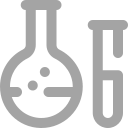
Product Description
Cells grown at a permissive temperature of 33.5℃ exhibit rapid cell division(Doubling time of 36 hrs), whereas little cell division occurs at a restrictive temperature of 39.5℃(Doubling time of 96 hrs).The cells have the ability to differentiate into mature osteoblasts expressing the normal osteoblast phenotype. At the restrictive temperatures, cell division is slowed, differentiation increases, and a more mature osteoblast phenotype is produced.

Information
ApplicationThe cells provide a homogenous, rapidly proliferating model system for studying normal human osteoblast differentiation, osteoblast physiology, and hormonal, growth factor, and other cytokine effects on osteoblast function and differentiation.
TissueHuman bone
Morphologyosteoblast
Growth Propertiesadherent

Specifications
Complete Growth MediumDMEM/F12 (PM150312)+0.3mg/mL G418+10% FBS (164210-500)+1% P/S (PB180120)
Subcultivation Ratio1:2-1:4
Medium Renewalevery 2 to 3 days
CryopreservationFreeze medium: 60% Basal medium+30% FBS+10% DMSO
Storage temperature: Liquid nitrogen vapor phase
Culture ConditionsAtmosphere: Air, 95%; CO2, 5%
Temperature: 34℃
Antigen ExpressionSV40 T antigen
Gene Expressionalkaline phosphatase
DurationThe cells provide a homogenous, rapidly proliferating model system for studying normal human osteoblast differentiation, osteoblast physiology, and hormonal, growth factor, and other cytokine effects on osteoblast function and differentiation.

Misc Information
SubculturingRemove and discard culture medium. Briefly rinse the cell layer with DPBS solution to remove all traces of serum that contains trypsin inhibitor.
Add 1.0 to 2.0 mL of Trypsin-EDTA solution to flask and observe cells under an inverted microscope until cell layer is dispersed (usually within 2 to 3 minutes). Cells that are difficult to detach may be placed at 37°C to facilitate dispersal.
Add 4.0 to 6.0 mL of complete growth medium and aspirate cells by gently pipetting. Add appropriate aliquots of the cell suspension to new culture vessels.